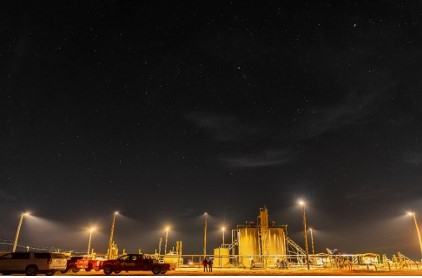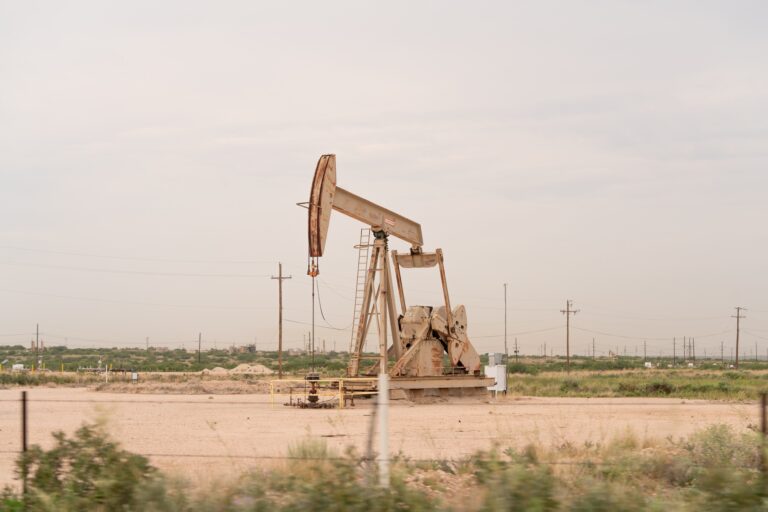Permian Basin oil company certified for ‘dark sky’ protection

Adrian Hedden
El Rito Media
achedden@currentargus.com
An oil and gas company operating in southeast New Mexico’s Permian Basin oilfields agreed to take steps at three facilities in Lea County to reduce artificial light impacting the wilderness in the region.
Colorado-based Franklin Mountain Energy was certified Jan. 9 by Tucson, Arizona-based nonprofit DarkSky International at the National Cave and Karst Research Institute in Carlsbad for its efforts to improve the viewshed at Carlsbad Caverns National Park by limiting excessive outdoor lighting.
The effort was part of a broader joint initiative by the park service and the New Mexico Oil and Gas Association to help oilfield operators to reduce manmade impacts to the night sky.
The Dark for the Park Alliance, formed last year by the park service and New Mexico industry groups, began work to draft a series of steps oilfield operators could take to limit “light pollution” caused by lighting used to illuminate round-the-clock oilfield work. DarkSky International defines light pollution as “human-made alteration of outdoor light levels from those occurring naturally.” The New Oxford American Dictionary calls it “brightening of the night sky caused by street lights and other man-made sources, which has a disruptive effect on natural cycles and inhibits the observation of stars and planets.”
The lighting certifications for Franklin Mountain Energy were the first ever given to a fossil fuel company.
A report on the recommendations published Jan. 8 included measures such as pointing floodlights down on works sites, rather than allowing the light to spread upward or away from the facility. The alliance also suggested limiting use of lighting to times when it was actually needed to illuminate work areas and using “warmer” amber-colored lights. Amber lights don’t scatter into the sky the same way the more traditionally used blue lights do, the alliance said in its recommendations.
The alliance said such practices would not only reduce night-sky impact but also cut companies’ energy costs and make work sites safer.
The recommended changes were applied to the three sites owned by Franklin Mountain Energy, and will be used in new builds, the company said.
“Safety for our workers is always our first priority,” said Audrey Robertson, Franklin Mountain Energy co-founder. “We also prioritize the environment and support night-sky friendly lighting practices. I am proud of our team for working on this project with DarkSky International and the alliance to ensure the continued beauty found throughout the Permian Basin’s skies.”
Carlsbad Caverns Superintendent Carmen Chapin said the lighting changes will protect views of the night skies, which are important to maintain as part of the park service’s conservation mission.
The park service was working to limit light pollution at Carlsbad Caverns, Chapin, said, and also at Chaco Culture National Historic Park in northwest New Mexico’s San Juan Basin – the state’s other main oil and gas region.
“Part of the night sky, for us, is entrenched in cultural traditions and backyard wonder,” Chapin said. “This is a challenge. We’re the park service. We’re in the business of forever.”
From 2008 to 2023, a 15-year period punctuated by dramatic increases in fossil fuel production in the Permian Basin, there was a 700% increase in brightness in the area, Chapin said,.
“This is a huge change in our ability to see the night sky,” she said.
Chapin said the increased light was impacting the ability to stargaze from the park and negatively affecting native nocturnal wildlife. Reducing the impact is a fix oil companies can accomplish affordably without interrupting operations, she said.
Stephen Hummel at the McDonald Observatory, operated in far-west Texas just south of Van Horn by the University of Texas, said the light from oil and gas operations in the remote region near Carlsbad Caverns rivals that of an urban area.
He said about 95 percent of the light seen at night from the park is from oil and gas operations.
“It looks like a city. In fact, it’s all oil and gas,” Hummel said.
The observatory in 2018 released its list of recommendations for oil and gas operators on the Texas side of the Permian Basin in response to light that was impacting McDonald’s ability to measure the stars and other planetary bodies, Hummel said.
The observatory was founded in 1939, he said, long before fossil fuels boomed in the region and such impacts could be predicted.
“In order to study space and the stars, we need dark skies,” Hummel said. “In the 1930s, we thought we were far enough out that we would never see artificial light. We underestimated the pace of human expansion. We went from having the darkest skies on the globe to pretty significant glow from the Permian Basin.”
Alexandra Fleming, DarkSky Alliance coordinator with the oil and gas association and a scientist at Chevron U.S.A., said the industry operates 24 hours a day but can take steps to limit its impacts when the sun sets on the oilfields.
“It’s not the absence of light. It’s better lighting,” she said. “It’s not rocket science.”



